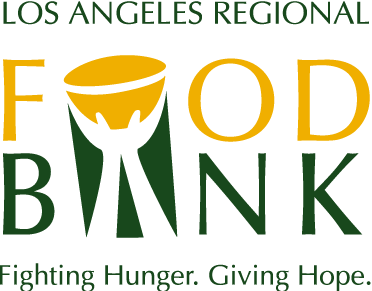The Importance of Healthy Eating: Cultivating Wellness
The Importance of Healthy Eating: Cultivating Wellness
The information presented in this article is strictly intended for general information purposes only and is not meant in any way to substitute or replace the medical advice from your healthcare provider or professional. Please consult your healthcare provider or a healthcare professional for any advice or guidance on whether the information and recipes presented are suitable or appropriate for you. The Los Angeles Regional Food Bank does not assume any responsibility or liability for disease-specific dietary needs, allergic reactions, food sensitivities, or other food or drug-related reactions.
The New Year marks a fresh start, and it often brings resolutions aimed at enhancing well-being. Many individuals set goals related to embracing healthier lifestyles, and a significant aspect of this journey involves nourishing our bodies with wholesome foods and getting enough physical activity. Instead of solely focusing on weight-related objectives, the LA Regional Food Bank is dedicated to exploring ways to foster and sustain a nourishing, balanced approach to eating and physical activity that supports overall health and vitality.
The following are some tips from the Nutrition Education team on achieving well-being.
Healthy eating
Fad diets may promise fast results, but such diets limit your nutritional intake, can be unhealthy, and tend to fail in the long run. A meal plan that helps promote health includes a variety of healthy foods. Try to add a variety of colors to your plate and think of it as eating the rainbow. Dark, leafy greens, oranges, tomatoes, peppers, and more contain vitamins, fiber, and minerals. Also, adding frozen vegetables and fruits to your prepared meals gives them a quick and convenient boost of color and nutrients. According to the Dietary Guidelines for Americans 2020-2025, a healthy eating plan includes fruits, vegetables, whole grains, and fat-free or low-fat milk and milk products and includes a variety of protein foods such as seafood, lean meats and poultry, eggs, legumes (beans and peas), nuts, and seeds. As well as low in added sugars, sodium, saturated fats, trans fats, and cholesterol and stays within your daily calorie needs (Centers for Disease Control and Prevention,2023).
Physical activity
How much physical activity you need depends mostly on your age. Adults need 150 minutes of moderate-intensity physical activity each week (this can be 30 minutes a day, five days a week) or 75 minutes of vigorous-intensity activity every week. Adults also need two days a week of muscle-strengthening activities (Centers for Disease Control and Prevention, 2023). Physical activity holds significant importance in fostering overall well-being and healthy habits. Regular exercise is known to offer a multitude of health advantages beyond any specific focus on weight. It elevates energy levels, uplifts mood, and substantially contributes to improved physical and mental health. When combined with a well-rounded and nutritious diet, physical activity aids the body in efficiently utilizing energy. While the idea of reducing caloric intake is commonly associated with certain health goals, research emphasizes that integrating consistent physical activity into our daily lives plays a fundamental role in long-term health and wellness (Centers for Disease Control and Prevention, 2023).”
Other factors:
Another contributing element to maintaining good health is getting enough sleep which is essential and significantly impacts your body’s functionality and overall wellness. Additionally, elements such as age, genetic predisposition, existing health conditions, medications, and environmental factors all contribute significantly to your holistic well-being. Prioritizing adequate sleep and considering these diverse factors collectively contribute to fostering optimal health beyond specific weight-related considerations
By being mindful of what we eat and how we move our bodies, we can put into practice a balanced approach to contributing to our good health now and as we age.
Works Cited
“Balancing Food and Activity for Healthy Weight.” Centers for Disease Control and Prevention, Centers for Disease Control and Prevention, 28 June 2023.
“Healthy Weight, Nutrition, and Physical Activity.” Centers for Disease Control and Prevention, Centers for Disease Control and Prevention, 9 June 2023.
To see recipes for healthy eating, please visit the Food Bank’s Nutrition Education Recipe page.
The levels of food and nutrition insecurity are high in our communities. Consider making a difference by donating today.





